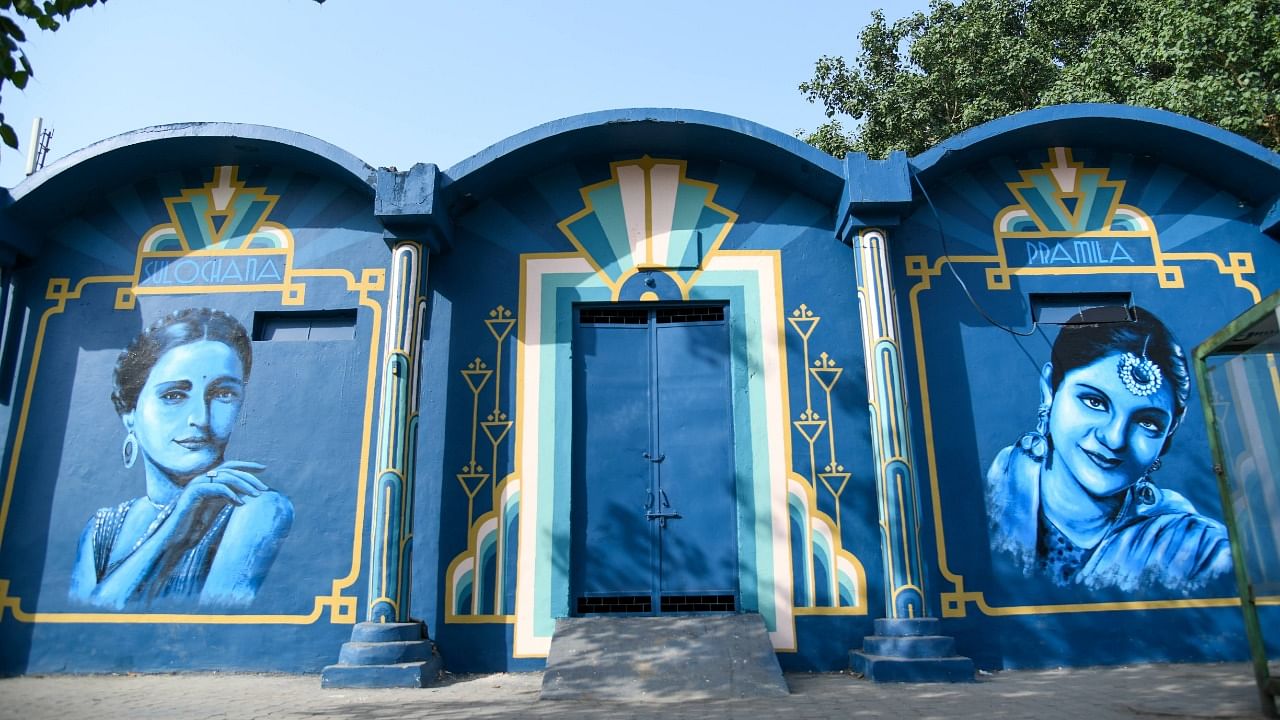

At walking distance from the Central Park in Delhi's Connaught Place, a new mural memorial pays tribute to three yesteryear Hindi film actresses the average passerby may only faintly recognise—Pramila, Sulochana and Nadira.
Their Indian screen names give no hint of their Baghdadi Jewish identities, which these murals in the heart of the national capital celebrate.
The murals were unveiled on April 25 jointly by Naor Gilon, Ambassador of Israel to India, and Meenakshi Lekhi, Minister of State for External Affairs and Culture, to mark 30 years of India-Israel diplomatic relations.
Speaking to DH, Gilon said the tribute to the three Indian-Jewish actresses touched upon multiple layers of shared relations between the two communities.
"Jews lived here for over 2,000 years with peace and equality—something we cannot say for most of the world where anti-Semitism was rife," said Gilon. "Jews living here and the friendship between these old civilisations are the basis for India and Israel's modern relations."
"The other layer is of women empowerment," Gilon adds. "These women, whose Baghdadi Jewish families originally came from Iraq, were among the pioneers of Bollywood."
Of the three, Sulochana (originally Ruby Myers) made her 1925 debut in Veer Bala, directed by Mohan Bhavnani. She fast gained status as a frontwoman in the silent film era; she was one of the highest-paid actresses of her generation by the 1930s and won the Dadasaheb Phalke Award in 1973.
Pramila (Esther Victoria Abraham), who worked in Indian cinema between the 1930s and 60s, was a woman of many firsts. Notably, she produced numerous Hindi films under her banner Silver Productions, the first ever to be headlined by a woman. She was crowned the winner at the inaugural Miss India pageant in 1947.
Nadira (birth name Florence Ezekiel) entered the industry last. Born in Baghdad, she migrated with her family to Bombay and made her debut in 1943 as a child actor in Mauj. She later matured into Hindi cinema's most bankable "vamp," with dramatically arched eyebrows and revealing dresses.
She inspired filmmaker Danny Ben-Moshe to make his 2017 documentary Shalom Bollywood: The Untold Story of Indian Cinema. The film outlined the stories of these women and Rose Ezra, another prominent star of Jewish descent. It also explored Indo-Jewish interactions during the 20th century and their place in society.
Given that showbiz was not considered "respectable" at the time, each step up these women took was an act of daring. Sulochana, Pramila, and Nadira carved an emancipatory niche in brave subversion of moral and social expectations that tightly regulate women's public roles in a male-dominated industry.
Sulochana, for Bhavnani's Wildcat of Bombay, reversed her gender multiple times over by playing a policeman and a gentleman—among a total of eight varied roles.
It was a radical overturn of the ancient performing arts tradition of cross-gender acting when men took on women's parts in Greek and Shakespearean theatre since it was taboo for women to perform.
Pramila, meanwhile, seemingly the most rebellious of the lot, proved her competence for liberation by performing her action stunts in films like Ulti Ganga and Basant.
Indian cinema's Jewish female stalwarts fittingly find their place in Connaught Place—a jewel addition to the capital's most vibrant multicultural milieu where many histories collide. Standing near Block E of the commercial hub, the murals are noticeable from afar, given their rich palette and distinct CinemaScope lens display.
The murals are the work of Delhi Street Art, the initiative behind much of the city's beautiful graffitied walls, and took merely a week to create.
"Even before the unveiling, we must have had about a 1,000 people stop by and take selfies," said Aakshat Sinha of DSA. "I expect that the photograph of this space will become the Google photograph of this location."
(Tanvi Akhauri is a freelance journalist and features writer covering the arts and culture beat.)